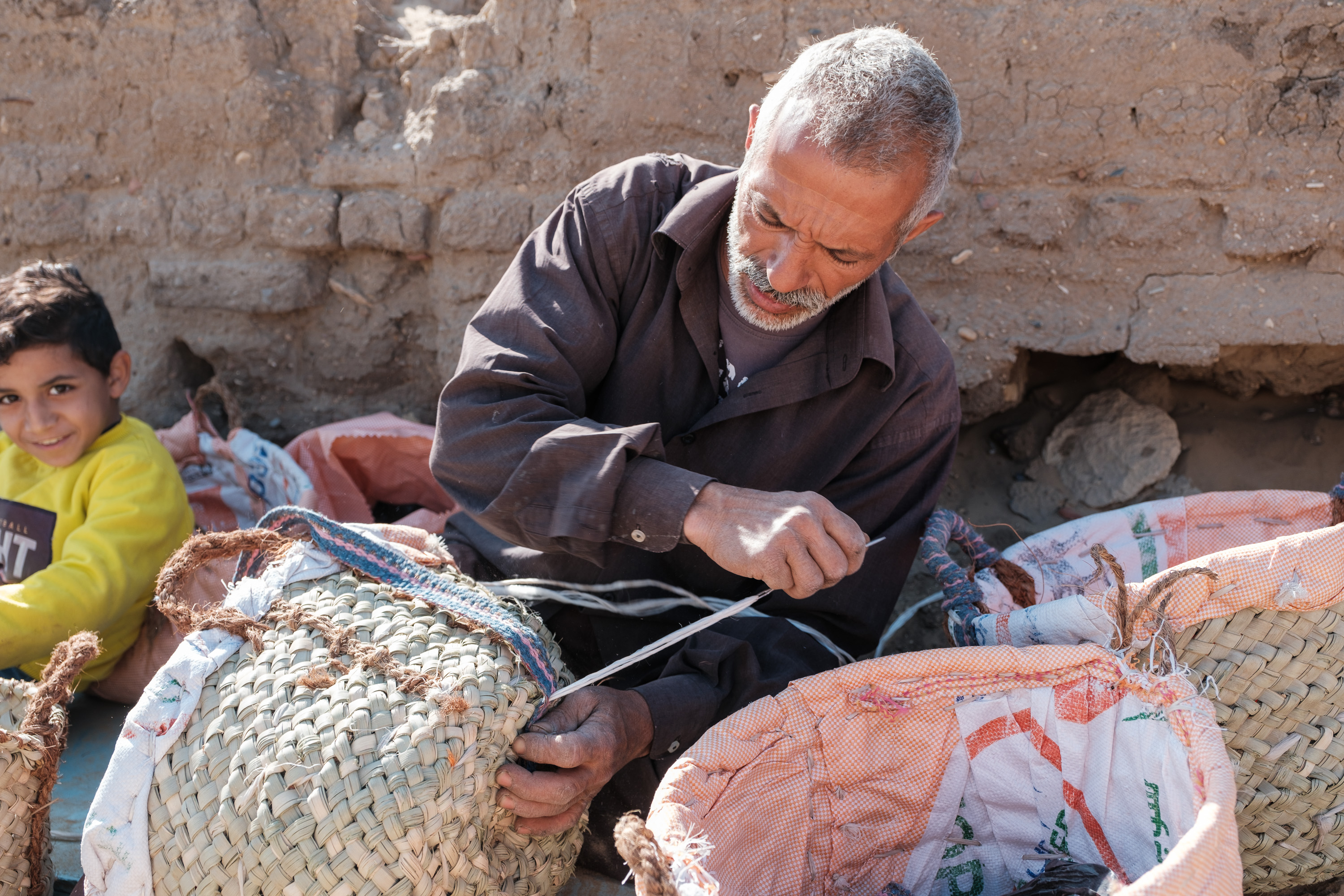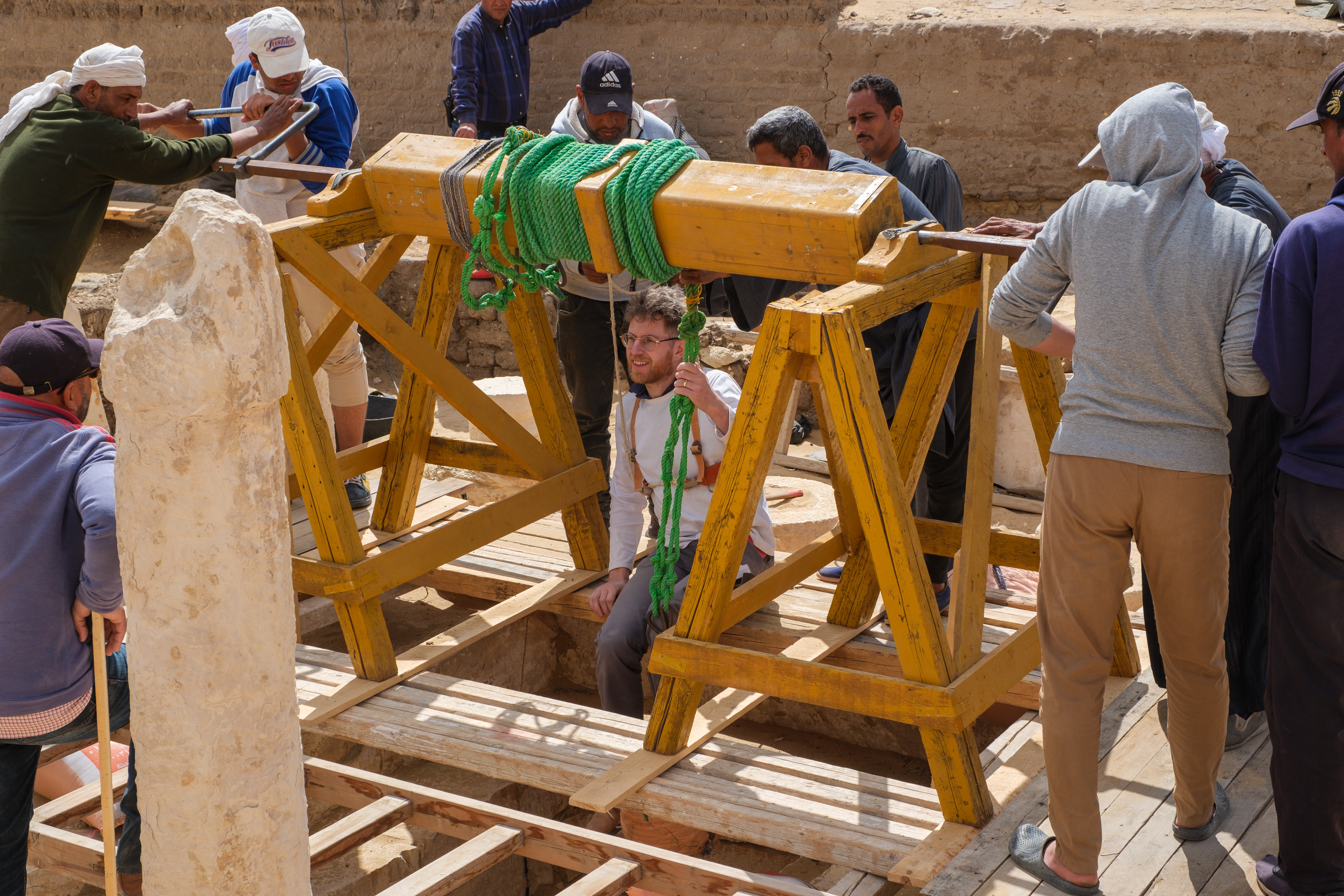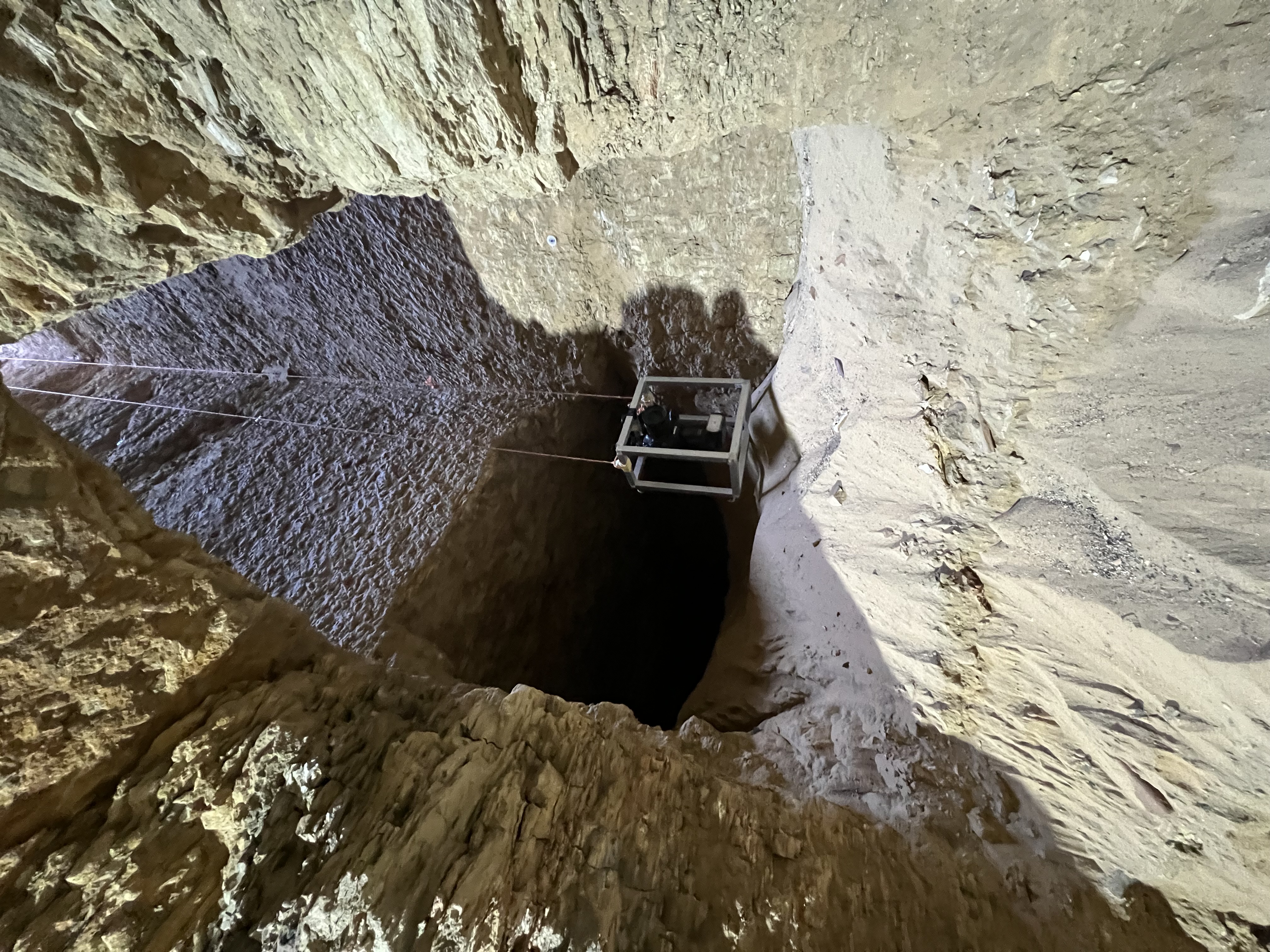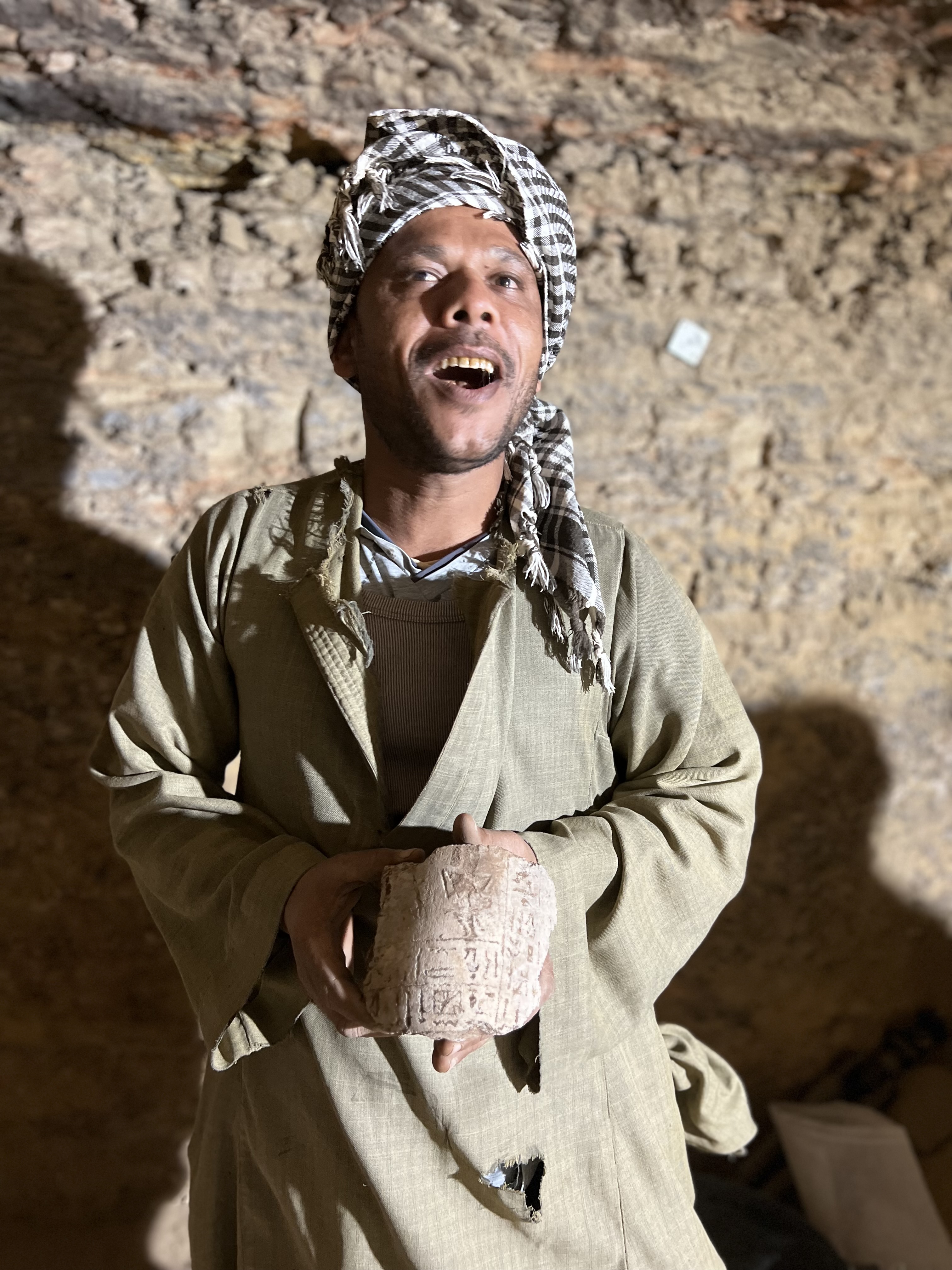Research
Saqqara Diary 2023 – Fourth week
info@museitorino.it
011 44 06 903
Dal lunedì al sabato dalle ore 9:00 alle 18:30
Excavating underground
By Nico Staring
The excavation campaign of 2023 is largely dedicated to the subterranean complex of Panehsy. The monumental tomb superstructure was excavated in 2022, and during the first half of the present season the area due east of the tomb was explored. The latter was carried out under the supervision of Paolo Del Vesco. We divide our tasks this year and so I relieved him of his work halfway through the season. My name is Nico Staring and since a few years I play the part of the expedition’s archaeologist. I am mainly interested in the development of the landscape of Saqqara during the New Kingdom (c. 1539–1078 BCE). Core questions pertain to the choices underlying tomb location, accessibility and clustering of tombs. My current research project at the University of Liège focuses on the relationship between tomb owners and the makers of their tombs. The study revolves around the tomb reliefs that represent the end product of the cooperation between commissioning patron and artists. Without giving away too much about this year’s excavation campaign, I can say that both these interests have been served well!

Figure 1: The baskets (zanabil) made of plant material are being repaired and strengthened at the excavation site.
Photo: Servaas Neijens.
Now back to the tomb of Panehsy. Part of the underground complex had already been excavated in 2022. The tomb shaft connects the superstructure with the subterranean spaces. Excavating that shaft had been a labour-intensive undertaking, because the bottom of the shaft was reached at no less than 11 metres under the tomb’s floor! The first metres were no cause for problems. However, the deeper the shaft, the more difficult it gets to discharge the sand. At that point it is time for the tambura, a large wooden lifting device consisting of a rope winding around a horizontal rotating drum. Iron hooks attached to the rope lift the baskets filled with sand. Above ground, the baskets are passed on by a human chain transporting all sand to the spoil heaps at the edge of the excavation area. The tambura does not just serve to haul up baskets of sand. It also serves as an elevator to lower ourselves into the deep and to get back up at the end of the work day. Also very importantly: halfway during the morning it lowers a pot of tea for the well-deserved break.

Figure 2: Concentrated at work excavating together with rais Hossam.
Photo: Servaas Neijens.
The underground complex of Panehsy consists of several spaces. For example, a small room entered from the bottom of the shaft gives access to a second shaft measuring 5 metres deep. It thus leads to the burial chamber located at a depth of 16 metres under the tomb’s floor. We were not first to travel the long distance toward the burial chamber. Ancient visitors had already taken assorted items and as a result little remained of the original burial equipment. Nevertheless, the archaeological remains help us to paint an image of what has happened there since the earliest burials more than 3,000 years ago.

Figure 3: Ready for the descent down the burial shaft of Panehsy with the tambura.
Photo: Servaas Neijens.
During the last week, we focused our attention on a room situated at a higher level (Chamber A), accessed at 5 metres down the shaft. The space has been cut from the bedrock and measures roughly 3 by 4 metres square. It is some 2 metres high and it was almost completely filled with sand. It meant that we had to enter the room flat on our bellies and explore the space while crawling. Excavating underground is not something for the claustrophobic!

Figure 4: The tomb shaft with breakthrough into Chamber A of Panehsy is being photographed by the team of the Politecnico di Milano.
Photo: Nico Staring.
All sand needs to be removed in baskets. This sort of excavation work is not a matter of speed. As an archaeologist, one tries to understand how such a space got filled with the various deposits, and what human activities led to the present-day situation. Therefore, all deposits are meticulously documented and finds such as pottery, bone material and objects are labelled and sent to the different specialists of the expedition. They analyse the finds in further depth.

Figure 5: Muhammad has just found the fragment of a canopic vase.
Photo: Nico Staring.
The presence of a second shaft that had been cut through the ceiling of Chamber A long ago, led to some complications. While emptying the chamber it also got filled with more sand coming from the second shaft. Such as breakthrough not just slows down the work, it can lead to dangerous situations also. In order to tackle this problem a work plan was drafted in close consultation with the foreman of the workmen, rais Hossam Azzam. It is important that work underground can be done safely, and thanks to his experience of many years, Hossam knows very well how to proceed. It goes to show that excavating at Saqqara is all about teamwork. The archaeological fieldwork is largely carried out in close cooperation with a team of local Egyptian specialists and workmen. In the small underground spaces I work together with Mohammed Sayed Ragab, Rafa’at ‘Eid Abdel Karim en Walid Khaled, who have been part of the Leiden-Turin expedition for many years now. At the same time, rais Hossam directs the team aboveground.

Figure 6: An almost empty Chamber A with breakthrough into a next shaft.
Photo: Nico Staring.
After a little more than one week of work, Chamber A has been largely emptied. A preliminary study of the complex stratigraphy (the layering of the various deposits) already tells the fascinating story of the human activities that have taken place in this underground structure. That study will be continued back home in the Netherlands . With the help of all descriptions, photos and 3D models, we are able to thoroughly review the excavation and try to squeeze out as much information as possible from the archaeological remains.

Figure 7: Team ‘underground burial complex Panehsy’, with Muhammad and Walid.
By Nico Staring
The excavation campaign of 2023 is largely dedicated to the subterranean complex of Panehsy. The monumental tomb superstructure was excavated in 2022, and during the first half of the present season the area due east of the tomb was explored. The latter was carried out under the supervision of Paolo Del Vesco. We divide our tasks this year and so I relieved him of his work halfway through the season. My name is Nico Staring and since a few years I play the part of the expedition’s archaeologist. I am mainly interested in the development of the landscape of Saqqara during the New Kingdom (c. 1539–1078 BCE). Core questions pertain to the choices underlying tomb location, accessibility and clustering of tombs. My current research project at the University of Liège focuses on the relationship between tomb owners and the makers of their tombs. The study revolves around the tomb reliefs that represent the end product of the cooperation between commissioning patron and artists. Without giving away too much about this year’s excavation campaign, I can say that both these interests have been served well!

Figure 1: The baskets (zanabil) made of plant material are being repaired and strengthened at the excavation site.
Photo: Servaas Neijens.
Now back to the tomb of Panehsy. Part of the underground complex had already been excavated in 2022. The tomb shaft connects the superstructure with the subterranean spaces. Excavating that shaft had been a labour-intensive undertaking, because the bottom of the shaft was reached at no less than 11 metres under the tomb’s floor! The first metres were no cause for problems. However, the deeper the shaft, the more difficult it gets to discharge the sand. At that point it is time for the tambura, a large wooden lifting device consisting of a rope winding around a horizontal rotating drum. Iron hooks attached to the rope lift the baskets filled with sand. Above ground, the baskets are passed on by a human chain transporting all sand to the spoil heaps at the edge of the excavation area. The tambura does not just serve to haul up baskets of sand. It also serves as an elevator to lower ourselves into the deep and to get back up at the end of the work day. Also very importantly: halfway during the morning it lowers a pot of tea for the well-deserved break.

Figure 2: Concentrated at work excavating together with rais Hossam.
Photo: Servaas Neijens.
The underground complex of Panehsy consists of several spaces. For example, a small room entered from the bottom of the shaft gives access to a second shaft measuring 5 metres deep. It thus leads to the burial chamber located at a depth of 16 metres under the tomb’s floor. We were not first to travel the long distance toward the burial chamber. Ancient visitors had already taken assorted items and as a result little remained of the original burial equipment. Nevertheless, the archaeological remains help us to paint an image of what has happened there since the earliest burials more than 3,000 years ago.

Figure 3: Ready for the descent down the burial shaft of Panehsy with the tambura.
Photo: Servaas Neijens.
During the last week, we focused our attention on a room situated at a higher level (Chamber A), accessed at 5 metres down the shaft. The space has been cut from the bedrock and measures roughly 3 by 4 metres square. It is some 2 metres high and it was almost completely filled with sand. It meant that we had to enter the room flat on our bellies and explore the space while crawling. Excavating underground is not something for the claustrophobic!

Figure 4: The tomb shaft with breakthrough into Chamber A of Panehsy is being photographed by the team of the Politecnico di Milano.
Photo: Nico Staring.
All sand needs to be removed in baskets. This sort of excavation work is not a matter of speed. As an archaeologist, one tries to understand how such a space got filled with the various deposits, and what human activities led to the present-day situation. Therefore, all deposits are meticulously documented and finds such as pottery, bone material and objects are labelled and sent to the different specialists of the expedition. They analyse the finds in further depth.

Figure 5: Muhammad has just found the fragment of a canopic vase.
Photo: Nico Staring.
The presence of a second shaft that had been cut through the ceiling of Chamber A long ago, led to some complications. While emptying the chamber it also got filled with more sand coming from the second shaft. Such as breakthrough not just slows down the work, it can lead to dangerous situations also. In order to tackle this problem a work plan was drafted in close consultation with the foreman of the workmen, rais Hossam Azzam. It is important that work underground can be done safely, and thanks to his experience of many years, Hossam knows very well how to proceed. It goes to show that excavating at Saqqara is all about teamwork. The archaeological fieldwork is largely carried out in close cooperation with a team of local Egyptian specialists and workmen. In the small underground spaces I work together with Mohammed Sayed Ragab, Rafa’at ‘Eid Abdel Karim en Walid Khaled, who have been part of the Leiden-Turin expedition for many years now. At the same time, rais Hossam directs the team aboveground.

Figure 6: An almost empty Chamber A with breakthrough into a next shaft.
Photo: Nico Staring.
After a little more than one week of work, Chamber A has been largely emptied. A preliminary study of the complex stratigraphy (the layering of the various deposits) already tells the fascinating story of the human activities that have taken place in this underground structure. That study will be continued back home in the Netherlands . With the help of all descriptions, photos and 3D models, we are able to thoroughly review the excavation and try to squeeze out as much information as possible from the archaeological remains.

Figure 7: Team ‘underground burial complex Panehsy’, with Muhammad and Walid.
info@museitorino.it
011 44 06 903
Dal lunedì al sabato dalle ore 9:00 alle 18:30